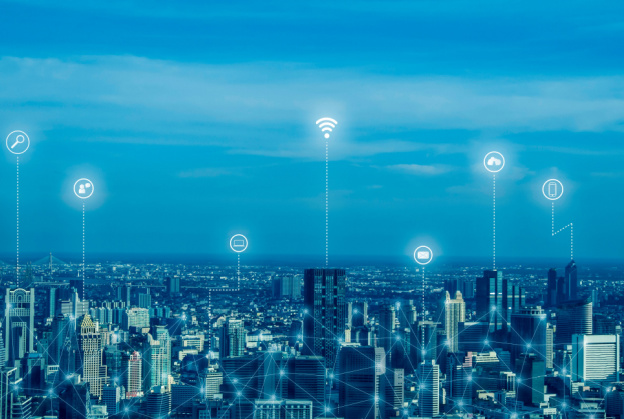Navigating the complicated cybersecurity landscape of today can be daunting, even for those with direct experience in this field. With cyberattacks increasing in both frequency and sophistication year over year, businesses must stay ahead of the ever-evolving threats that exist online. Being informed can help you protect yourself from potential vulnerabilities and build a robust security stack to mitigate risks. This post will unpack some of the reasons why the cybersecurity landscape is so complicated today.
Economic Woes Create Urgency for Cybersecurity Measures
As the world in 2022 experienced financial woes, namely inflation, the cybersecurity sector was also affected and is predicted to continue to be impacted by it. During these difficult economic times, many organizations face budget cuts, layoffs, and reduced resources, thus weakening their cybersecurity posture. Additionally, the desperation of individuals and groups affected by economic hardship can increase cybercrime activities, such as identity theft, phishing scams, and ransomware attacks. As a result, businesses and individuals must prioritize cybersecurity measures to protect against these threats and ensure the continuity of their operations. The cost of a cyber-attack or data breach can be significant, and the impact on an already struggling organization could be devastating.
Artificial Intelligence (AI)
AI can be both a boon and a bane for cybersecurity, as it offers new possibilities for identifying and mitigating threats while presenting new vulnerabilities for bad actors to exploit. AI can be leveraged by cybercriminals to detect weaknesses in software and security programs and design malware that constantly changes to evade detection by automated defensive tools. AI can also be used to generate phishing emails that are more convincing than those crafted by humans and can be adapted to target specific individuals or organizations. This is why companies adopt a “zero trust” model, which constantly challenges and inspects network traffic and applications to verify their safety. However, despite the challenges, security professionals can leverage AI to build better defenses against cyberattacks, such as Security Orchestration, Automation, and Response (SOAR).
Cybersecurity Leaders: Navigating Evolving Risks and Opportunities
The ever-evolving nature of cybersecurity threats has necessitated a corresponding evolution in leadership roles. According to Christian Have, CTO of computer security firm LogPoint, the role of the CISO has transformed from an isolated C-suite position to a data-driven decision-making role. In 2023, cybersecurity experts predict further changes for CISOs, with the title becoming increasingly challenging as security leaders stay in the spotlight. With added legal pressure and personal accountability for breaches, the job of a CISO has become even more stressful. They are working tirelessly to secure larger budgets to ensure that security remains a board-level issue and a responsibility across the entire organization. This shift is partly due to high-profile security leader convictions, whistleblower complaints, and the criminal prosecution of former Uber CSO Joe Sullivan in the past year, which has implications for security chiefs.
Increase in Supply Chain Attacks
Supply chain cyber-attacks have risen recently, with numerous high-profile incidents affecting major companies across industries. These attacks occur when hackers target vulnerabilities in a company’s supply chain, often exploiting third-party vendors or suppliers that may have weaker security measures. The goal is to gain access to the target company’s systems and data, often to exfiltrate sensitive information or disrupt operations. The SolarWinds attack, which affected several US government agencies and private companies in 2020, is a prime example of a supply chain attack with far-reaching consequences. This trend has highlighted the need for greater collaboration and information sharing among companies and their suppliers to strengthen the cybersecurity of the entire supply chain.
Critical Infrastructure Facing Higher Levels of Vulnerability
The high stakes associated with critical infrastructure make them a prime target for attackers seeking to cause disruption, ransom, or inflict harm. Microsoft’s 2022 Digital Defense Report states that cyber-attacks targeting critical infrastructure worldwide jumped up from 20% of all nation-state attacks Microsoft detected to 40%. Critical infrastructures, such as power grids, water supplies, transportation systems, and hospitals, are fundamental to the functioning of modern society. They are vulnerable to cyber-attacks due to their reliance on computer systems and networks, which are potential targets for cybercriminals. Moreover, these infrastructures are frequently operated by outdated systems that may not be adequately secured or updated, leaving them open to exploitation. In addition, critical infrastructure systems are often complex, distributed, and interdependent, with many points of entry for attackers. Attackers can leverage this complexity to find and exploit vulnerabilities, gaining access to sensitive data and control systems.
Remote Work
As we all know, the COVID-19 pandemic accelerated the trend of remote work, with many organizations shifting to remote work policies, initially to comply with social distancing and stay-at-home orders. Fast forward to 2023, and many professionals are still working remotely. According to Upwork, as much as 22% of the American workforce is expected to be completely remote by 2025. To put that into perspective, the number of remote workers prior to 2020 was only 6%. This shift has expanded the attack surface for potential cyber-attacks as many employees work from their homes or other remote locations. Remote work introduces new vulnerabilities, including unsecured home networks, personal devices, and the potential for phishing attacks targeting remote employees. Cybercriminals have been quick to take advantage of this expanded attack surface, with attacks such as phishing, ransomware, and remote desktop protocol (RDP) attacks on the rise. To mitigate these risks, organizations must ensure that their remote work policies and technologies include robust security measures, such as two-factor authentication, virtual private networks (VPNs), and endpoint protection.
Ransomware Attacks Increasing
There was a significant increase in ransomware attacks in 2022. According to various reports, the number of ransomware attacks has been on the rise, with a sharp increase in the number of attacks targeting critical infrastructure, such as healthcare and energy sectors. The attacks are becoming more sophisticated, with cyber criminals using various tactics, including double extortion and ransomware-as-a-service (RaaS), making them more difficult to detect and prevent. In addition, many organizations are still vulnerable due to inadequate security measures and a lack of employee awareness, which makes them easy targets. As a result, there has been an increase in the number of companies paying the ransom demand, which only serves to fuel the activity and perpetuate the problem. Ransomware attacks will continue to be a significant threat in 2023, and businesses and governments must work together to combat this growing problem.
As seen in 2022, when the world is going through major changes such as the offering of new technologies and economic issues, for the cybersecurity sector, this also means new possible threats or incentives that drive attacks. We highly encourage organizations to stay ahead of the evolving threats online and implement a robust cybersecurity strategy to protect themselves from potential vulnerabilities.
Learn more about how AgileBlue can help you strengthen your cybersecurity by filling out the form below.




